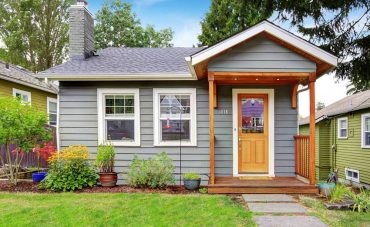 Tiny houses are currently “big” so to speak, but really, how many people can actually live and function in a 350-square-foot home after living in 2,500 square feet or more?
Tiny houses are currently “big” so to speak, but really, how many people can actually live and function in a 350-square-foot home after living in 2,500 square feet or more?
Downsizing is a popular topic for sure, but there is another small home movement on the forefront, and that is the smaller, well-appointed home (1,000 to 1,400 square feet or less). I’ve been a fan for decades, preferring a home with high-quality features and finishes over square footage.
But let’s be honest, it is not easy going from a spacious home to one that is one-third the size. It takes careful and very thoughtful planning to successfully pull off. Consider these 10 tips to help make your transition:
1. Priorities:
Think carefully about what you love, and what you can leave behind. Taking only the things you love and use the most is key to a successful downsize. If you have to rent a storage unit, you have missed the point!
2. Pets:
If you have pets, you know they have needs including locations for food dishes, litter boxes and other things like outdoor space to play in.
3. Lifestyle:
Lifestyle items, like exercise equipment, need designated spaces. When people don’t consider this and just figure that they will “find somewhere” to put it, often times it ends up in the living room. If that doesn’t bother you, then proceed at will.
4. Daily living:
Simple daily living items. Do you have a Roomba or a similar small appliance that needs recharging and easy access? Where will that go?
5. Special needs:
Do you have special hobbies or work from home? You don’t need a lot of space for a home office or work area. I have seen successful spaces that were 5 by 5 feet. It is all about layout and planning.
6. Special storage:
Do you need special storage for holiday items, hobbies or things that belong to kids who are off at college? Figure out upfront what you need so it can be easily designed into the space.
7. Creative space use:
Use creative ways to make every inch of space and storage count. Use roll trays under kitchen and vanity sinks, in the cabinet over the refrigerator, in linen cabinets and in pantries so you can access items all at once, quickly, without having to unload the entire cabinet. Use upper cabinets that go to the ceiling — you may need a step stool to access the upper level, but that space works well for seldom used pieces.
8. Re-purposed space:
Do you really need a dining area or would an oversized island do the trick? Seating can be on one to three sides, and offer lots of space for dining options.
9. Right-sizing:
Think about rooms’ sizes and what you need to accommodate your preferences. Do you require a king-size bed? Do you have an heirloom buffet that needs to fit? So often I hear people say things like, “My couch won’t fit in that space.” Well, unless it is an heirloom or holds some special spot in your heart, you can buy a new couches anywhere. Most will fit your new space and you can sell the old one to help offset the cost.
10. Entertaining needs:
Think REASONABLY about entreating. Every day, I see people building very large homes to entertain in. That is awesome, but when I ask how often they entertain, it turns out it’s a pretty low number (a dozen times a year is on the high side). So, you are going to build or buy a huge house that you have to maintain, pay for, pay taxes on, keep clean etc., so that your quests have a spacious party place?
Yes, smaller homes make for cozier entertaining and a few guests might have to eat with a plate on their lap, but honestly, those are some of the best parties I have been to. A little crowding, on occasion, never hurt anyone.
Downsizing is not right for everyone. But if it’s on your mind, put these tips to work and start planning on how you will live a smaller, simpler life!
























